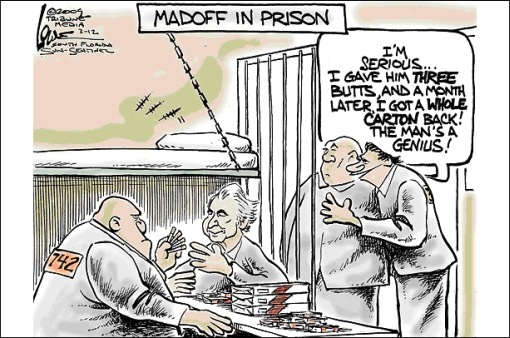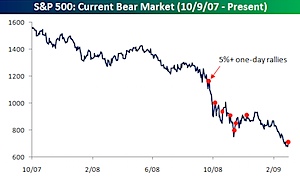Over the weekend I was reading John Mauldin’s weekly email, and I had a thought that sums up the situation with the banks.
They’re all idiots, though that wasn’t my thought. They ran their businesses in ways guaranteed to make them weak hands later in the business cycle, simply because the rules allowed them to do so.
Even if the rules allow me to put AAA rated MBS paper in my capital reserves, and I can use that capital reserves to loan more money, then it doesn’t mean that I should necessarily do that. A little bit of conservative accounting might be in order when we’re talking about new securities and rules that are not fully understood.
It’s as if I read about being able to run my truck on soybean oil, going out to buy a truckload of soybeans, and then entering shipping contracts to ship stuff all over the country with my truck — all before checking to see if the new fuel will even work!
Banks are in a special category… their retail inventory is money, which makes things a little more complicated. In theory, the money should be fungible and a dollar in capital reserves should be equivalent to a dollar in shareholder liabilities. But it isn’t, especially when financial innovation (and corrupt ratings agencies) allow illiquid securities to be counted as capital reserves.
Honestly, any banker that bought MBS and counted them as part of their capital reserves because a rule allowed them to is effectively a “weak hand” and should be put out of business. If you buy an asset without the ability to hold that asset to maturity, you’re basically playing russian roulette with your bank.
If you can’t or don’t want to mark something to market, you shouldn’t be using it as a capital reserve.







